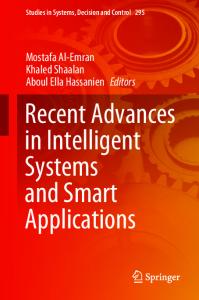WOLEDs and Organic Photovoltaics Recent Advances and Applications
The search for renewable energy sources and the efficient utilization of energy have been the most important research areas in modern science and technology. The design and development of materials that can contribute to light-harvesting, solar energy con
- PDF / 53,655 Bytes
- 7 Pages / 439.37 x 666.142 pts Page_size
- 52 Downloads / 312 Views
For other titles published in this series, go to http://www.springer.com/series/8059
.
Vivian W. W. Yam Editor
WOLEDs and Organic Photovoltaics Recent Advances and Applications
Editor Prof. Vivian W.W. Yam Department of Chemistry The University of Hong Kong Pokfulam Road Hong Kong China [email protected]
ISSN 1865-3529 e-ISSN 1865-3537 ISBN 978-3-642-14934-4 e-ISBN 978-3-642-14935-1 DOI 10.1007/978-3-642-14935-1 Springer Heidelberg Dordrecht London New York # Springer-Verlag Berlin Heidelberg 2010 This work is subject to copyright. All rights are reserved, whether the whole or part of the material is concerned, specifically the rights of translation, reprinting, reuse of illustrations, recitation, broadcasting, reproduction on microfilm or in any other way, and storage in data banks. Duplication of this publication or parts thereof is permitted only under the provisions of the German Copyright Law of September 9, 1965, in its current version, and permission for use must always be obtained from Springer. Violations are liable to prosecution under the German Copyright Law. The use of general descriptive names, registered names, trademarks, etc. in this publication does not imply, even in the absence of a specific statement, that such names are exempt from the relevant protective laws and regulations and therefore free for general use. Cover design: WMXDesign GmbH, Heidelberg, Germany Printed on acid-free paper Springer is part of Springer Science+Business Media (www.springer.com)
Preface
A major global issue that the world is facing today is the upcoming depletion of fossil fuels and the energy crisis. In 1998, the global annual energy consumption was 12.7 TW; of which 80% was generated from fossil fuels. This also translates into huge annual emissions of CO2 that leads to massive environmental problems, particularly the global warming, which could be disastrous. Future global annual energy needs are also estimated to rise dramatically. A major challenge confronting the world is to find an additional 14–20 TW by 2050 when our energy reserves based on fossil fuels are vanishing. The massive demand for energy would require materials and/or processes that would help to provide new sources of clean renewable energy or to develop processes that would harvest energy or to better utilize energy in an efficient manner. The present monograph, WOLEDs and Organic Photovoltaics – Recent Advances and Applications, focuses on a very important and timely subject of topical interest that deals with the more efficient use of energy through white organic light-emitting diodes (WOLEDs) for solid-state lighting and the development of clean sources of renewable energy through the harvesting of light energy for conversion into electrical energy in organic photovoltaics. While LED solid-state lighting and photovoltaics have been dominated by inorganic semiconductor materials and silicon-based solar cells, there have been growing interests in the development of WOLEDs and organic photovoltaics. In spite of the formidable challenges th
Data Loading...










